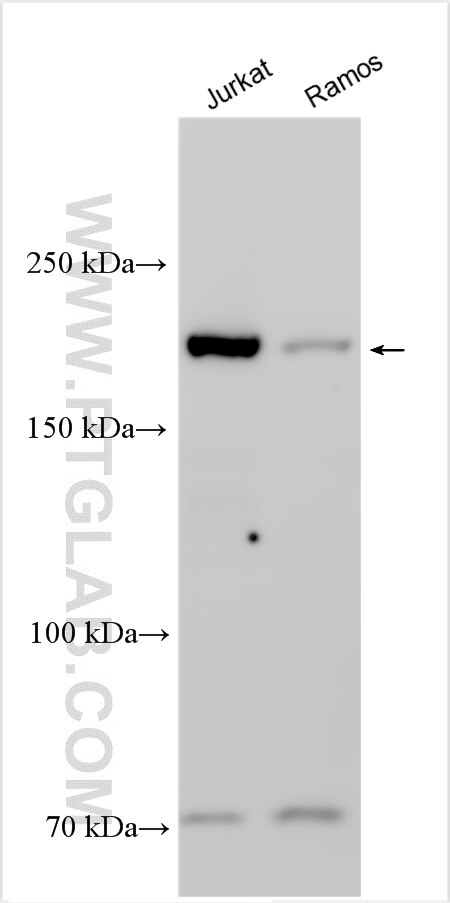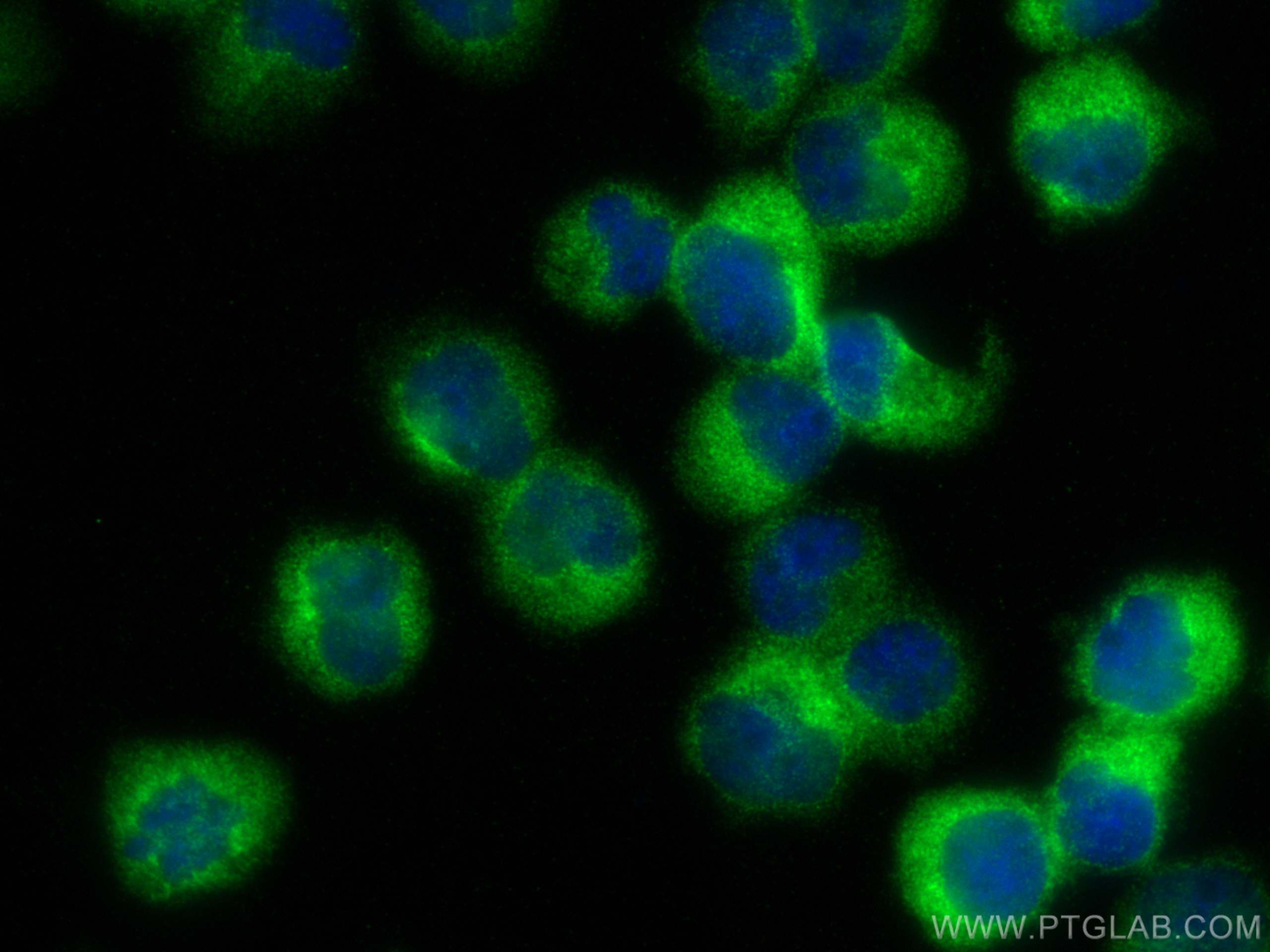Tested Applications
| Positive WB detected in | Jurkat cells, Ramos cells |
| Positive IF/ICC detected in | Jurkat cells |
Recommended dilution
| Application | Dilution |
|---|---|
| Western Blot (WB) | WB : 1:500-1:2000 |
| Immunofluorescence (IF)/ICC | IF/ICC : 1:50-1:500 |
| It is recommended that this reagent should be titrated in each testing system to obtain optimal results. | |
| Sample-dependent, Check data in validation data gallery. | |
Product Information
20245-1-AP targets DOCK2-Specific in WB, IF/ICC, ELISA applications and shows reactivity with human samples.
| Tested Reactivity | human |
| Host / Isotype | Rabbit / IgG |
| Class | Polyclonal |
| Type | Antibody |
| Immunogen |
Peptide Predict reactive species |
| Full Name | dedicator of cytokinesis 2 |
| Calculated Molecular Weight | 212 kDa |
| Observed Molecular Weight | 212 kDa |
| GenBank Accession Number | NM_004946 |
| Gene Symbol | DOCK2 |
| Gene ID (NCBI) | 1794 |
| RRID | AB_10699879 |
| Conjugate | Unconjugated |
| Form | Liquid |
| Purification Method | Antigen affinity purification |
| UNIPROT ID | Q92608 |
| Storage Buffer | PBS with 0.02% sodium azide and 50% glycerol, pH 7.3. |
| Storage Conditions | Store at -20°C. Stable for one year after shipment. Aliquoting is unnecessary for -20oC storage. 20ul sizes contain 0.1% BSA. |
Background Information
DOCK2, also named as KIAA0209, belongs to the DOCK family. It is involved in cytoskeletal rearrangements required for lymphocyte migration in response of chemokines. DOCK2 activates RAC1 and RAC2 small GTPases, probably by functioning as a guanine nucleotide exchange factor (GEF), which exchanges bound GDP for free GTP. DOCK2 may also participate in IL2 transcriptional activation via the activation of RAC2. The antibody is specific to DOCK2.
Protocols
| Product Specific Protocols | |
|---|---|
| IF protocol for DOCK2-Specific antibody 20245-1-AP | Download protocol |
| WB protocol for DOCK2-Specific antibody 20245-1-AP | Download protocol |
| Standard Protocols | |
|---|---|
| Click here to view our Standard Protocols |






